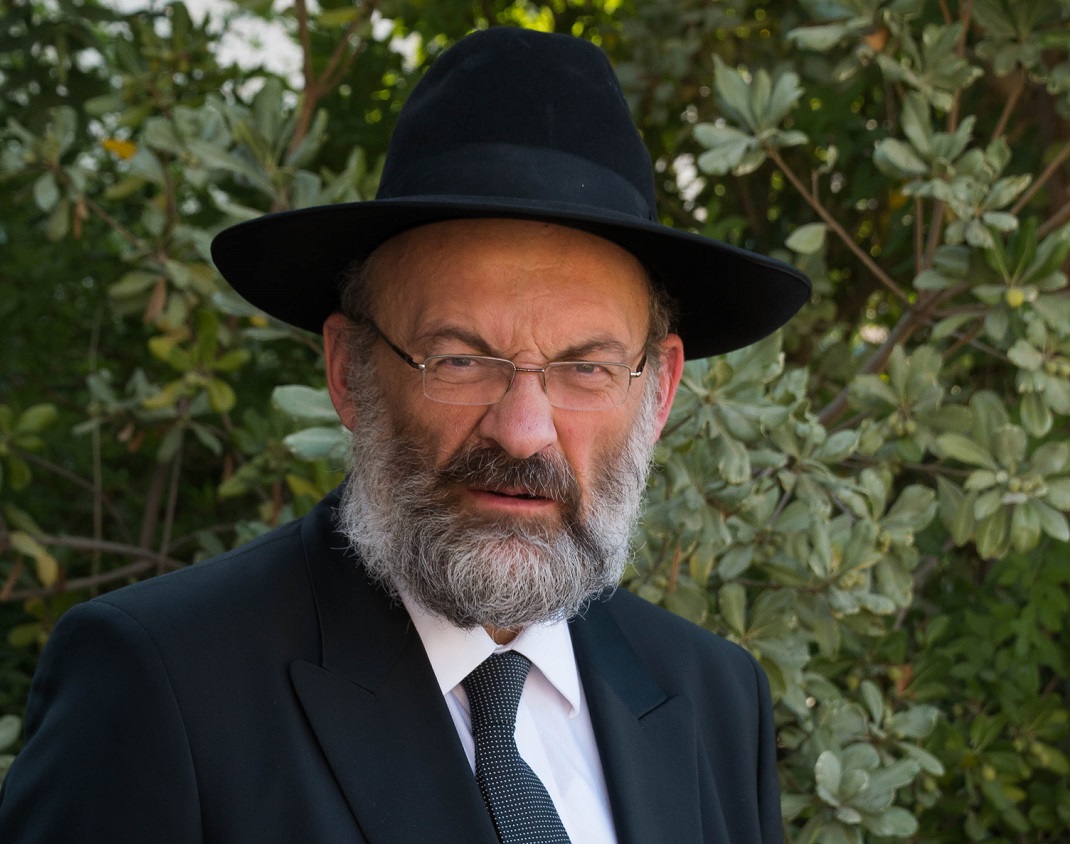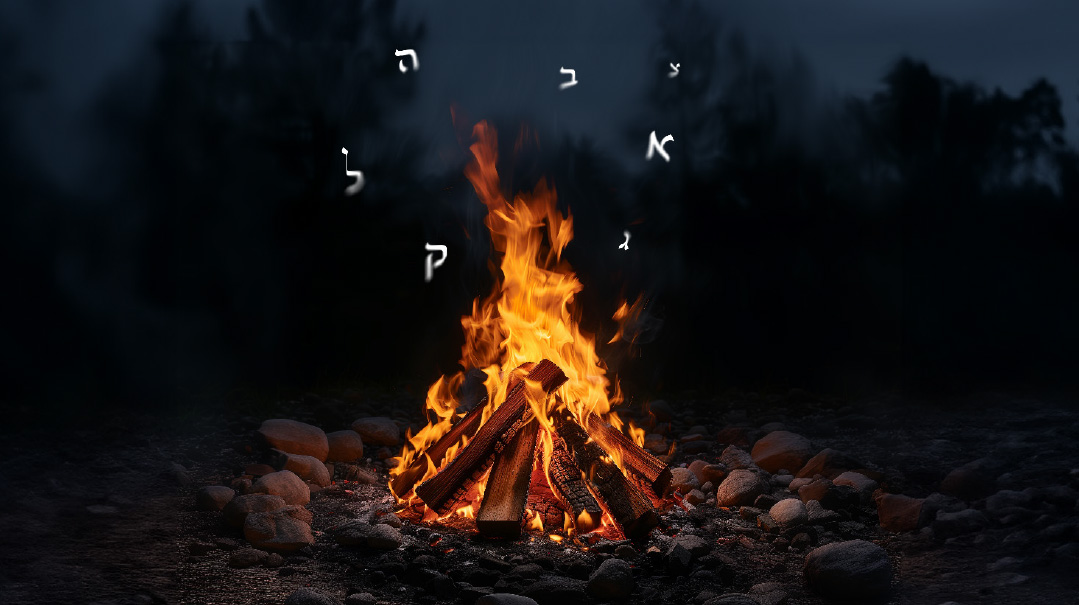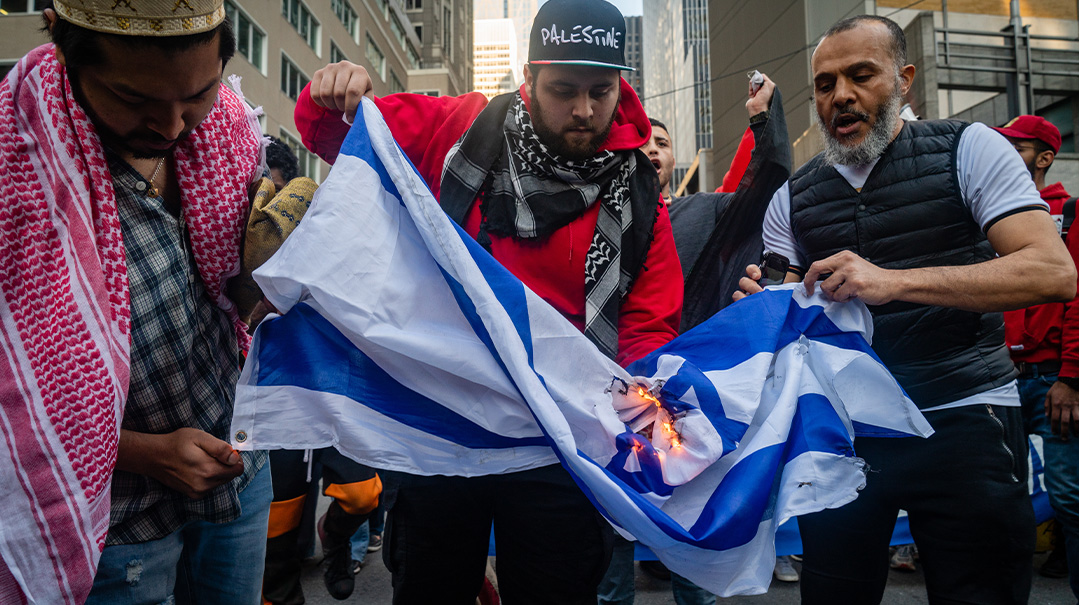It Begs a Question

Asking questions isn’t just about learning new information; it’s about deepening our understanding
Prepared for print by Rabbi Eran Feintuch
Few sections in the Haggadah are as well-known as the Four Sons, and few are as misunderstood. It seems like a simple passage we can breeze through en route to our dramatic reenactment of the Ten Plagues. But if the Torah goes out of its way to spell out how to address each of the Four Sons, its message is surely deeper than meets the eye. If we look a bit deeper, we’ll find profound lessons not only for our children, but also for ourselves.
The fourth son, “the one who doesn’t know what to ask,” is the least understood of them all. Most people view him as the illustrated Haggados depict him: a sweet little toddler who isn’t capable of formulating a question about the novel rituals he sees at the Seder. But this interpretation is dubious.
First of all, must the Torah tell us how to teach a baby? Every parent knows you have to give a short and simple summary of whatever you’re trying to teach him. And even more puzzling, why do we answer him with the same pasuk we use to answer the wicked son?
The truth is that the fourth son isn’t a baby. He knows very well how to ask; he just doesn’t know what to ask. And he doesn’t know what to ask, not because he doesn’t understand — but because he thinks he understands it all.
This son is intelligent; he really gets it. He understands exactly what we do at the Seder and why we do it. He performs all the mitzvos of the night meticulously, sings all the songs, and even says impressive divrei Torah. There’s only one thing he fails to do: ask. He doesn’t ask questions, because he thinks he knows the answers.
In a way, he’s right. He knows the facts of Yetzias Mitzrayim by heart. But asking questions isn’t just about learning new information; it’s about deepening our understanding.
That’s why we preface the Seder with the Four Questions of Mah Nishtanah. This isn’t just an introduction to the Seder; it provides a framework to the whole story. Chazal tell us the proper way to relate the story of Yetzias Mitzrayim is in question-and-answer format. Though the youngest attendees of the Seder are usually the ones to chant Mah Nishtanah, the questions aren’t only for them. The Gemara tells us that even if two eminent Torah sages hold the Seder together, they must ask each other these questions!
We ask these questions every year not to learn the answers, but to better understand them. In fact, it’s because we know the answers that we don’t think about them, and we never attain a deeper understanding.
Yes, we know what happened during Yetzias Mitzrayim. But that’s why we need to think about it again and again — otherwise we’ll be stuck forever with the understanding we had as children. We have to stop and think not only about what happened during Yetzias Mitzrayim, but also about its significance and the way it affects our lives.
Hashem always guides the world, but He conceals His Hand with nature. During Yetzias Mitzrayim, though, Hashem thrust the curtain aside. At the Seder, we tell the story of how Hashem in all His glory stepped onto the world stage and wrested His people from the clutch of the Egyptians — an event that is totally unique in all of world history. Even the greatest Torah scholar must recognize that the Divine revelations of Yetzias Mitzrayim far transcend his comprehension.
This is where the fourth son goes wrong. He never stops to ask why Hashem saw fit to personally wage war on the Egyptians for the sake of a people who’d sunken to their spiritual nadir. He doesn’t think about the deeper significance of the mitzvos he does. He has no questions at all. Everything makes sense. Hashem saw the Jewish People were oppressed, so He saved them. Since He freed our forefathers from slavery, we come together once a year to thank Him and celebrate our freedom.
To this son, the Seder is the anniversary of a historical event; the mitzvos are symbolic mementos of the past. Every year the Seder is the same to him, because the past never changes.
We tell this son that the exact opposite is true. The mitzvos we perform tonight are not meant to commemorate Yetzias Mitzrayim; Hashem took us out of Mitzrayim in order for us to perform these mitzvos! “It is because of this that Hashem took me out of Egypt,” we tell him, motioning toward the matzah and maror that lie before us on the Seder table — so that we should perform His mitzvos (Rashi). The purpose of Yetzias Mitzrayim, with all its miracles and wonders, was our avodas Hashem.
Hashem did not intervene in Egypt in order to liberate individual Jews from their bondage. He did so in order to create Klal Yisrael, a nation dedicated to Hashem and charged with revealing Him in the world through their avodah. Each and every Jew throughout history plays a unique role in that grand mission.
Every Jew, in every generation, tells his son: Hashem took me out of Egypt so that I should do His mitzvos. Our avodah today was the reason for Yetzias Mitzrayim, no less than that of our ancestors in Egypt.
That’s why we tell the fourth son the same pasuk we tell the rasha. We use this pasuk to rebuke the wicked son and point out the error of his ways — that he separates himself from Klal Yisrael.
Similarly, we use this pasuk to teach the fourth son that he’s got it all wrong. The mitzvos we perform at the Seder aren’t meant to commemorate the Exodus; they’re its purpose.
If we understand the message we’re telling the fourth son, we should realize we’re also talking to ourselves. Every year, the Seder becomes more and more familiar, like a well-rehearsed script. We know more and more information about Yetzias Mitzrayim, so we’re apt to believe questions are for the kids.
Like the fourth son, we need to ask. The more we know, the more we’re in danger of sticking with our superficial understanding. Fortunately, our answer to the fourth son opens up the door for us to ask our own questions.
Once we understand that Yetzias Mitzrayim was for the sake of our avodah, we should be bursting with questions. What cosmic significance do our mitzvos have that Hashem wrought open miracles for their sake? How do I identify my unique path in avodas Hashem, and what role do I play in Klal Yisrael’s mission of revealing Hashem in the world? What about my individual avodah makes it so dear to Hashem, and how can I make it even dearer to Him? How should I live my life differently in light of these discoveries?
As we tell the story of Yetzias Mitzrayim and learn just how important our avodah is, we should take note of these questions, and carry them with us long after the Seder ends. If we keep thinking about our questions, the revelations of Yetzias Mitzrayim will lead us to continual discovery and enduring growth.
This year, let’s stop being sophisticated and get back to basics. When we say the four questions of Mah Nishtanah, let’s remember that the questions are also, or perhaps mostly, for us. Then we can approach the story of Yetzias Mitzrayim like the five-year-old child sitting next to us — eager to learn and full of wonder.
(Originally featured in Mishpacha, Issue 956)
Oops! We could not locate your form.







